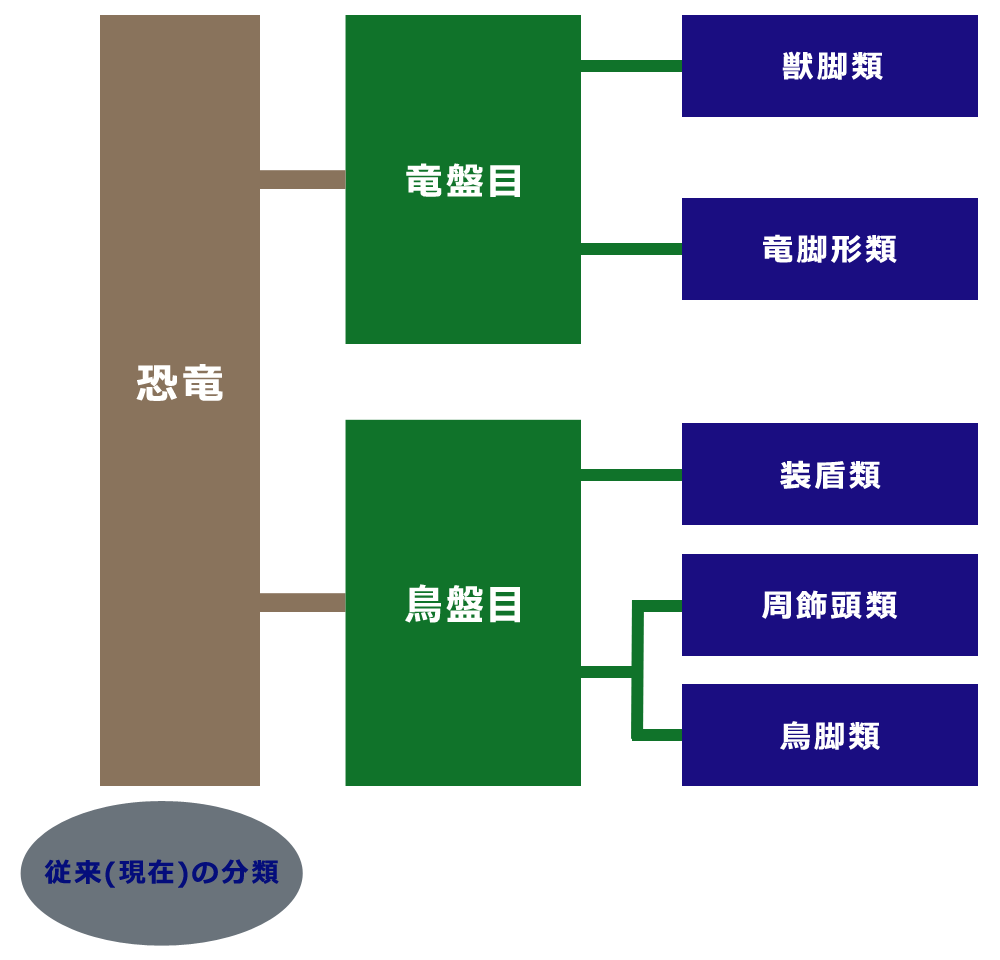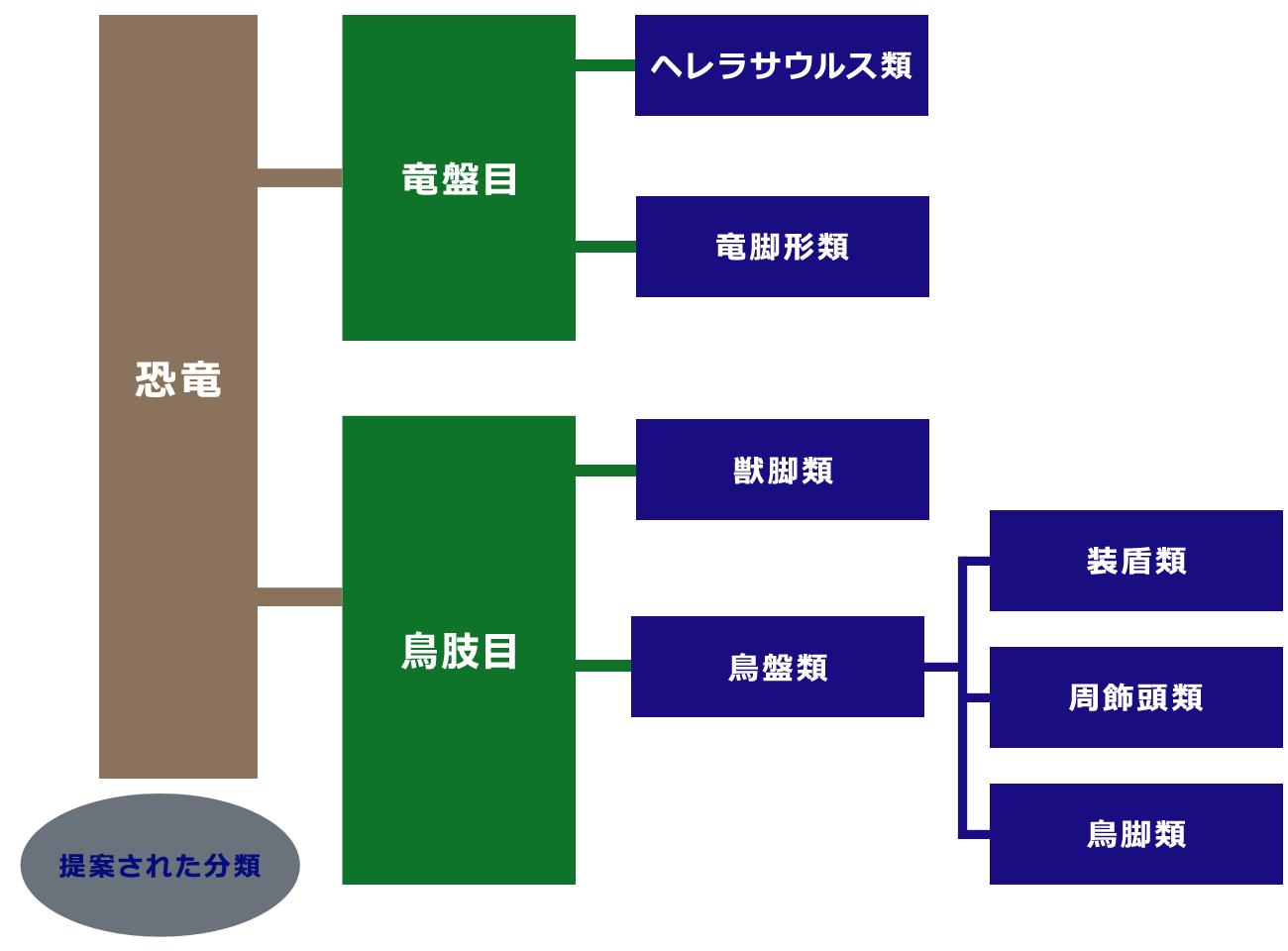Saurischia
Saurischia is further divided into the following two types:
- Theropoda
- Sauropodomorpha
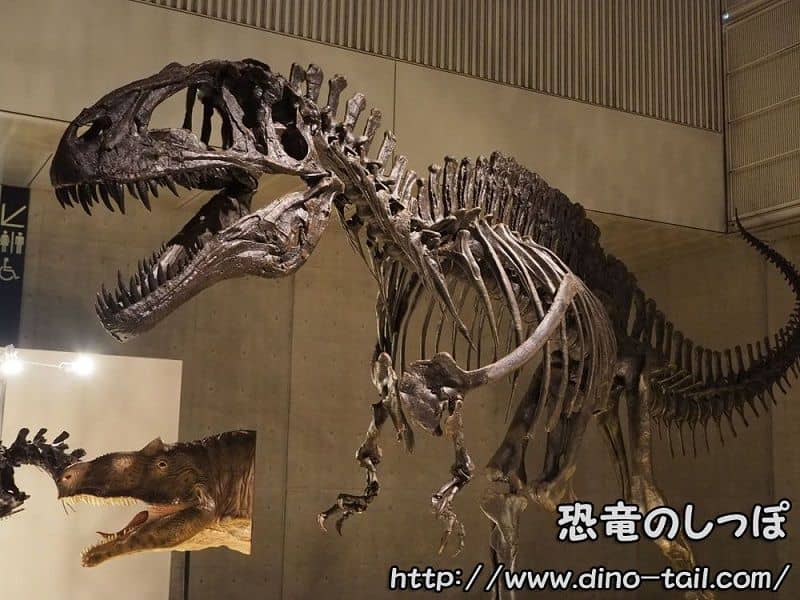
All carnivorous dinosaurs discovered to date belong to Theropoda. (Conversely, not all theropods were carnivorous. Chilesaurus, which lived in the Late Jurassic, is presumed to have been herbivorous despite being a theropod.)
They are characterized by walking on two legs, and it is known that theropods like Eodromaeus and Herrerasaurus existed from the early stages of dinosaur evolution, 230 million years ago.
It is also an established theory that some theropods evolved into modern birds.
Representative theropods include Tyrannosaurus, Allosaurus, Dromaeosaurus, Velociraptor, Spinosaurus, and Oviraptor.
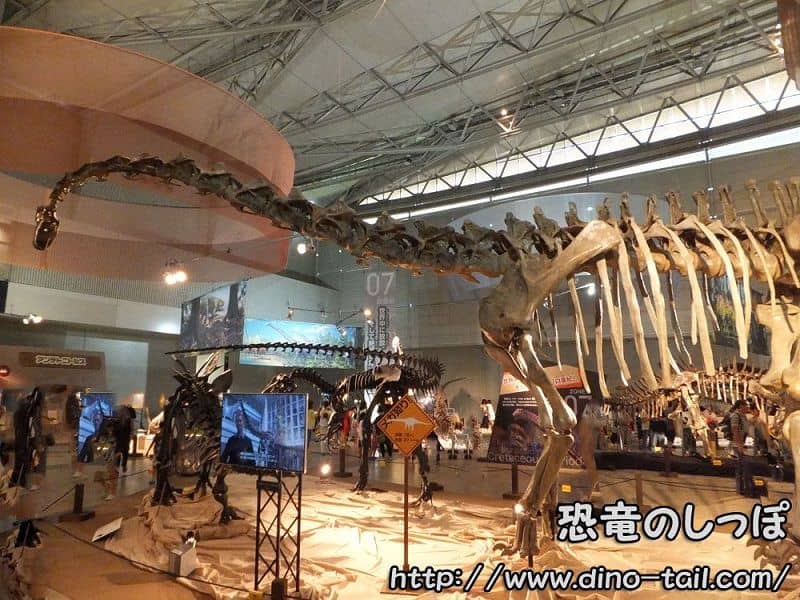
Sauropodomorpha are large herbivorous dinosaurs. Also known as "thunder lizards," they are characterized by a small head and long neck relative to their body size.
Early sauropodomorphs like Plateosaurus were bipedal, but as they grew larger, they transitioned to walking on four legs. It's possible that quadrupedalism is related to their large size.
Representative sauropodomorphs include Apatosaurus, Brachiosaurus, Diplodocus, Argentinosaurus, and Camarasaurus.
Ornithischia
Ornithischia is further divided into the following three types:
- Marginocephalia
- Thyreophora
- Ornithopoda
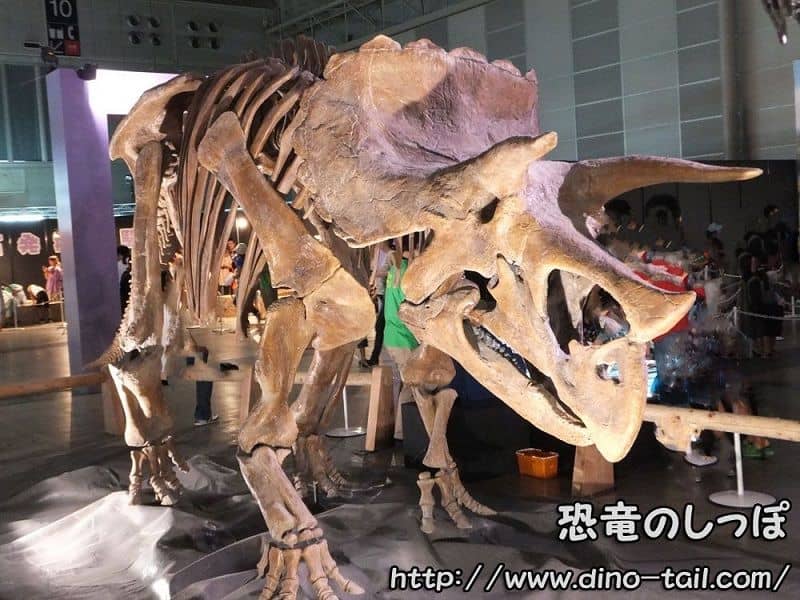
Marginocephalia includes
A characteristic of ceratopsians is their parrot-like beak. Early ceratopsians have been found in China and Mongolia, leading to the theory that 'ceratopsians originated in Asia and then spread to other regions.'
Early ceratopsians like Psittacosaurus and Archaeoceratops were capable of bipedal locomotion. Similar to sauropodomorphs, ceratopsians transitioned to quadrupedalism as they evolved and grew larger.
Representative marginocephalians include Triceratops, Styracosaurus, Protoceratops, and Pachycephalosaurus.
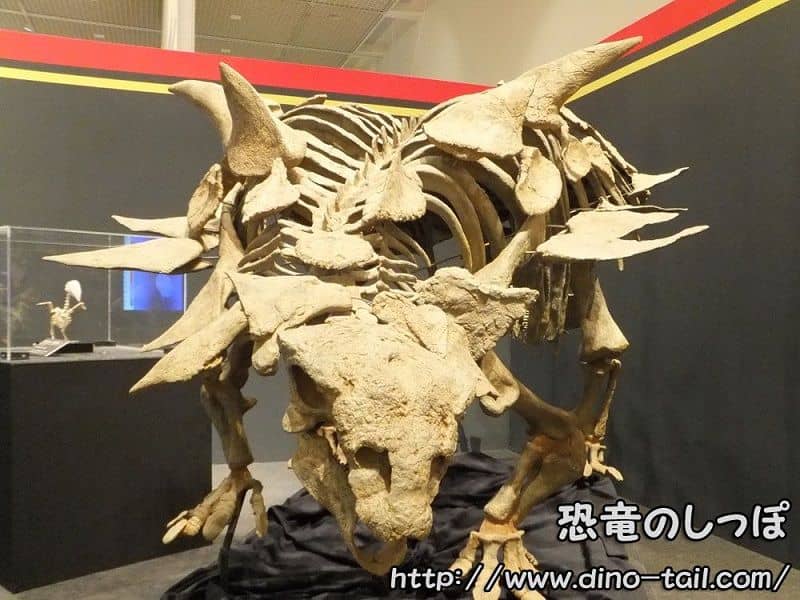
Thyreophora includes dinosaurs with spikes on their backs and tails, or those covered in hard, bony armor. This group includes dinosaurs called
Dinosaurs in this group were generally not agile. When attacked by carnivorous dinosaurs, they had countermeasures other than "fleeing," such as swinging the spike-like thorns or hammer-like bone clubs at the end of their tails.
Representative thyreophorans include Stegosaurus, Kentrosaurus, Ankylosaurus, and Saichania.
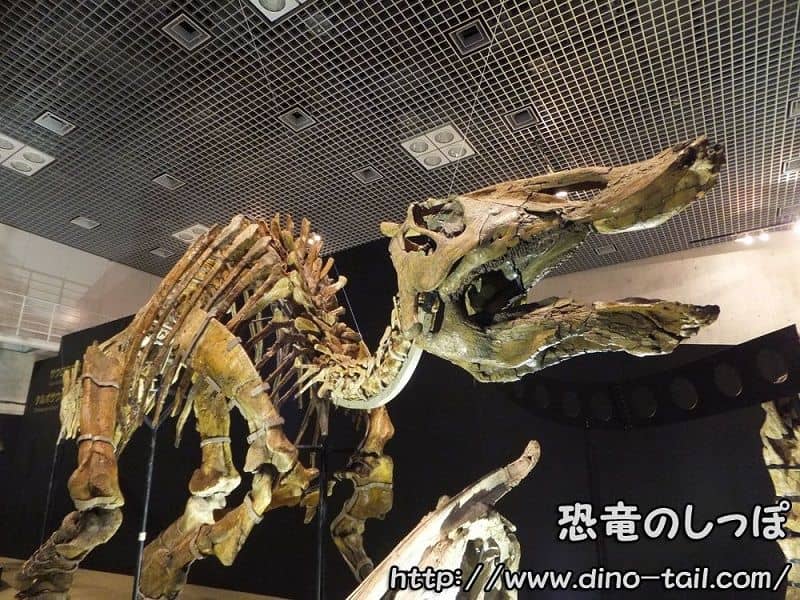
Ornithopoda seems to have been capable of walking on four legs when moving slowly and on two legs when running. They spread explosively, especially from the mid-Cretaceous onward, and inhabited almost all regions, including Antarctica.
Representative ornithopods include Iguanodon, Parasaurolophus, Maiasaura, and Corythosaurus.
A New Challenge to Classification
In March 2017, a new theory on dinosaur classification was published in the world-renowned scientific journal "Nature."
Traditionally, dinosaurs were broadly divided into
Matthew Baron, a paleovertebratologist at the University of Cambridge, proposed that
